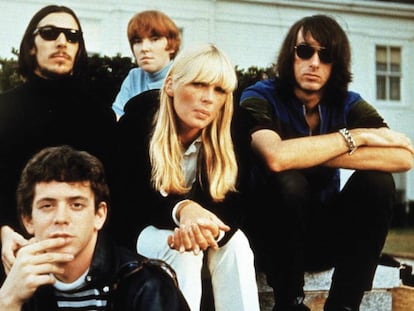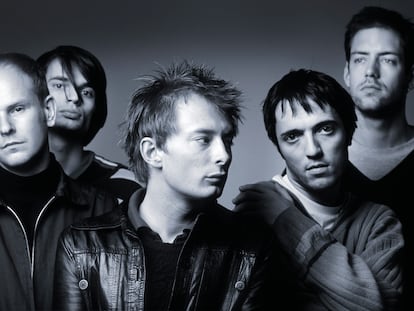Chaos, pain and triumph: How Neil Young created his masterpiece ‘Harvest’
In love, on medication and emotionally unstable, the singer-songwriter was a hippy and a millionaire when he recorded his most successful album 50 years ago
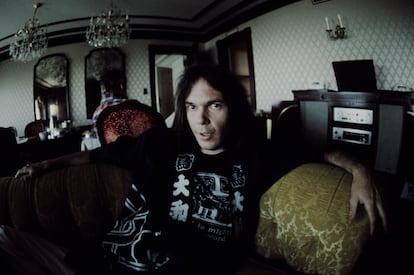
The photo on the back sleeve cover of Harvest is full of symbolism. Four musicians playing in a barn. Four musicians sitting with their instruments – drums, pedal steel, piano and bass – looking fearfully and expectantly at a 25-year-old man, the only band member who is standing, side-on, facing his colleagues, in a flannel shirt with long, dark hair obscuring his face: Neil Young. He is suffering from severe back pain, accentuated by the weight of a huge, white Gretsch electric guitar. The scene was set on the $500,000 (€440,000) ranch Young had bought with the money he had made after founding the band Buffalo Springfield, taking part in the super-group Crosby, Stills, Nash and Young and releasing three solo releases. He is an idealist coming to terms with his failure to be a bone fide hippy, adapting to his new status as a rich musician. The song being recorded in the barn was to be included on Harvest, Young’s most famous and biggest-selling record, an album that took a year to cut due to a pause so he could undergo surgery, a wonderfully disjointed record that was recorded in four different parts of the world, a masterpiece that 50 years later still sounds vigorous and exciting.
In 1972, Neil Young was in love with the Californian actress Carrie Snodgress. He had seen her in a movie, Diary of a Mad Housewife (1970), which earned Snodgress a Best Actress Oscar nomination and two Golden Globes. Using his status as a rising rock star, Young arranged for a note to be left in Snodgress’ dressing room while she was performing in a play in Los Angeles. It simply read: “Call Neil Young,” with a number. The actress, more in tune with Hollywood than the rock scene, had no idea who Young was. But she called anyway. They formed a powerful partnership: the rocker and the Hollywood star, lanky, scruffy, hippies with a healthy bank balance.
She moved to the ranch recently acquired by Young. In September 1972, they had a son, Zeke, who suffered from cerebral palsy. Snodgress dedicated her heart and soul to him and shelved her career. Young’s love for Snodgress and Zeke inspired two songs, Heart of Gold, his only US number one, and A Man Needs a Maid. But Harvest proved to be a torturous recording, taking almost a year from January to October, 1971. The main reason was Young’s surgery, after he had injured his back moving planks of wood on the ranch. He tried to correct the problem with a corset he wore for several months, but eventually opted to go under the knife.
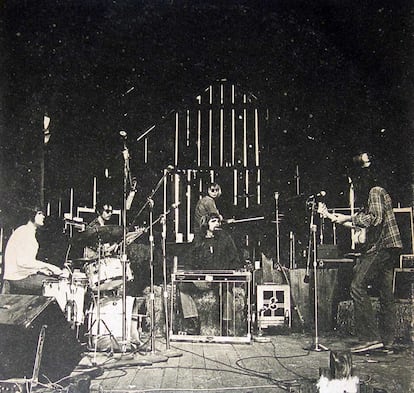
Harvest’s sense of stylistic chaos is due to it being recorded in four different places: Nashville, London, Young’s California ranch and during a live concert in Los Angeles. Young had headed to Nashville to appear on The Johnny Cash Show. Always impulsive, he told music producer Elliot Mazer that he had some new songs and only needed a band to record them. Mazer found drummer Kenny Buttrey, bassist Tim Drummond and steel-guitarist Ben Keith, who would go on to form Young’s backing group, The Stray Gators. Pianist and composer Jack Nitzsche also came aboard and Keith would go on to play with Young for 37 years, until his death in 2010. The Nashville sessions reaped the gentle rock-country songs Out On The Weekend, Harvest and Heart of Gold.
“The bad time he was having of it because of the back pain and the mood swings, mainly because of the medication, meant that everyone kept their distance,” Mazer recalled in Shakey, Jimmy McDonough’s exhaustive biography of Young. Enigmatic and ruthless when dishing out emotions, Young sowed chaos with his tactics. “Neil showed the band the songs at the last minute. There was no time to rehearse. The band didn’t know the songs until the moment came to record them,” wrote McDonough. While filming The Johnny Cash Show, Young asked fellow guests singers James Taylor and Linda Ronstadt for some backing vocals. Taylor picked up Young’s banjo guitar, an instrument he had never before played in his life, and picked out a few harmonies for Old Man. That was how improvised everything was.
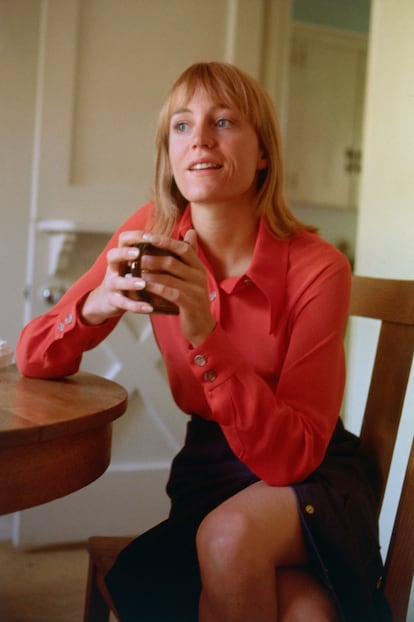
The songs Alabama and Words were recorded at Young’s ranch, with vocals from Crosby, Stills and Nash. They are songs that would have gone down well with Crazy Horse, the band that had worked with Young on the albums Everybody Knows This Is Nowhere (1969) and After The Gold Rush (1970), and who Young was still friendly with, although he preferred The Stray Gators.
The two songs recorded in London, A Man Needs a Maid and There’s a World, were embellished by Nitzsche’s production and the London Symphony Orchestra and sound as though they were designed for a movie soundtrack. The fourth location, Royce Hall, an auditorium on the campus of the University of California, witnessed the recording of one of Young’s most charismatic creations, The Needle and the Damage Done, one of the first songs to ever address heroin addiction so explicitly and which foreshadowed the death of Crazy Horse guitarist Danny Whitten, who overdosed in November 1972 at the age of 29.

The subject matter of Harvest is painful even though Young was in love. The singer assumes that nothing lasts forever and sentimental injuries will appear along the way. On Heart of Gold, he says he is “searching… for a heart of gold” and that he is “getting old,” a sort of lyrical self-flagellation because he believes he will never be able to offer all the love another person requires. On Old Man, he confronts his own paradox in a song dedicated to the foreman on his ranch: unlike his employee, the singer is twenty-something and rich, but always in search of comfort: “Old man, take a look at my life, I’m a lot like you. I need someone to love me the whole day through.”
In 1975, Young and Snodgress separated. She had left her acting career behind to care for Zeke but Young continued to achieve success in an industry he is still active in. But he has never again reaped a triumph to match Harvest.
Tu suscripción se está usando en otro dispositivo
¿Quieres añadir otro usuario a tu suscripción?
Si continúas leyendo en este dispositivo, no se podrá leer en el otro.
FlechaTu suscripción se está usando en otro dispositivo y solo puedes acceder a EL PAÍS desde un dispositivo a la vez.
Si quieres compartir tu cuenta, cambia tu suscripción a la modalidad Premium, así podrás añadir otro usuario. Cada uno accederá con su propia cuenta de email, lo que os permitirá personalizar vuestra experiencia en EL PAÍS.
¿Tienes una suscripción de empresa? Accede aquí para contratar más cuentas.
En el caso de no saber quién está usando tu cuenta, te recomendamos cambiar tu contraseña aquí.
Si decides continuar compartiendo tu cuenta, este mensaje se mostrará en tu dispositivo y en el de la otra persona que está usando tu cuenta de forma indefinida, afectando a tu experiencia de lectura. Puedes consultar aquí los términos y condiciones de la suscripción digital.
More information
Últimas noticias
Most viewed
- Reinhard Genzel, Nobel laureate in physics: ‘One-minute videos will never give you the truth’
- Oona Chaplin: ‘I told James Cameron that I was living in a treehouse and starting a permaculture project with a friend’
- Pablo Escobar’s hippos: A serious environmental problem, 40 years on
- Why we lost the habit of sleeping in two segments and how that changed our sense of time
- Chevy Chase, the beloved comedian who was a monster off camera: ‘Not everyone hated him, just the people who’ve worked with him’

